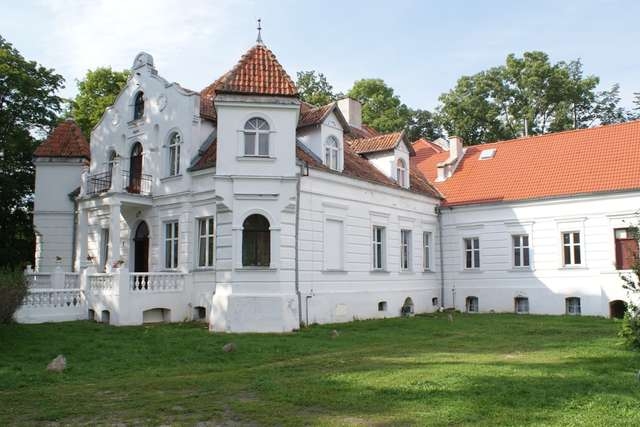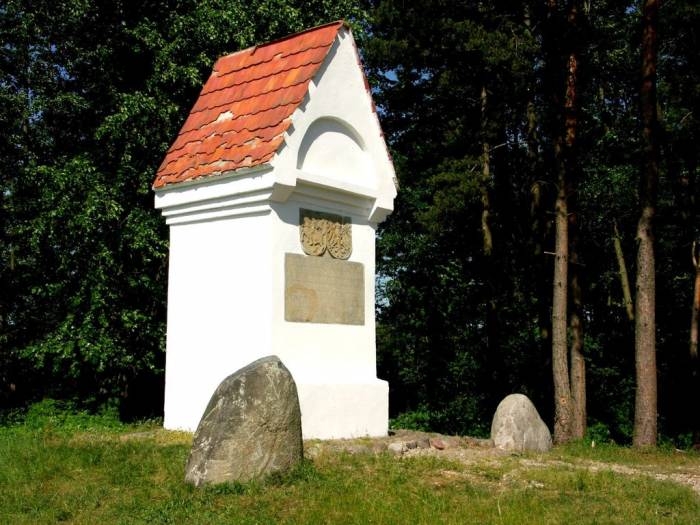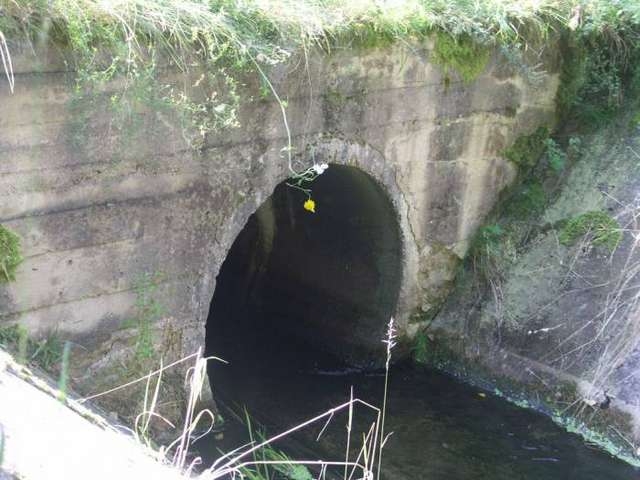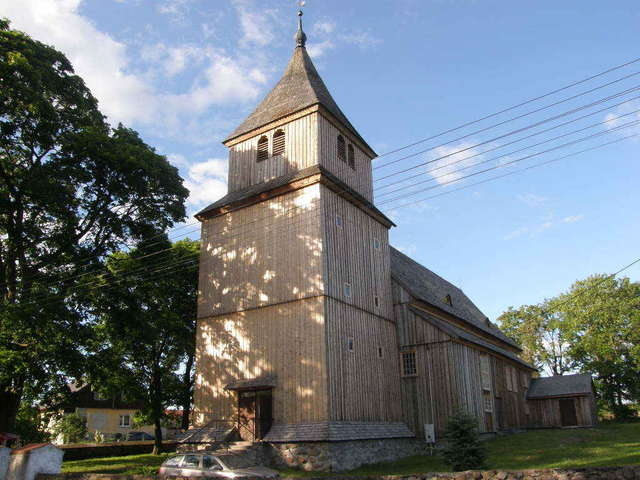Places
-

Pałac w Golubiach
Tourist attractions - Ełk countyPalace in Golubie comes from XIX century and was once known as the Valley of Carolina. The initiator of the structure and its owner was Count Graf von Stillfried. The place became famous with its special microclimate and curative water distributed throughout the farm. Current owners are happy to tell interesting stories about this place. The legend says that in winter 1411, when the Lithuanians were returning from Grunwald, their heavy equipment broke the surface of the ice. Soldiers, horses and all of the equipment sank in Golubskie lake. Every cold winter one can hear the moans and clatter of horses coming out from the lake. Currently, on the premises there is Folk Crafts and Art centre and rehabilitation centre.
-

Słup graniczny
Tourist attractions - Ełk countyAccording to latin inscription on board attached to the post, it was built to determine the boundary line distinguishing the lands of Zygmunt August and Albert I. It was put up in August 1545 on the joining point of the boarder lines. In later years, the fate of history has changed the course of border. Currently, the post is there to remind visitors these historical facts.
-

Tunel i podziemny kanał
Tourist attractions - Ełk countyIt is an attraction for curious and courageous. Channel tunnel has a diameter of 1.6 meters, its length is 300 meters, and in some places it reaches up to 10 meters under the ground. To walk through the channel it is recommended to remember about wellies, protective helmet and a flashlight. It is a rare technical solution connecting two lakes - Szóstak and Ułówki, and it was created in the early twentieth century, a period of great investments into drying out the fields around.
-

Drewniany kościół w Ostrykole
Tourist attractions - Ełk countyOstrykół village was completely destroyed by the Mongol invasions in 1656. Only the temple which was built in 1667 survived almost untouched until now. It is a wooden, three-aisled chapel housing the baroque altar from 1693. Inside, there are some large figures of angels with the brass candlesticks on their sides as well as some characteristic curly columns and valuable galleries. One can admire original choir organs from 1799.